Choosing an Overseas Dental Lab for crown & bridge work is no longer just about cost or turnaround—it’s about consistency, precision, and the ability to meet clinical demands across every case. For procurement decision-makers, the real challenge is evaluating quality through visible outcomes and invisible processes—before the first case even ships.
To make a sound decision, there are six key dimensions that signal whether a lab is truly reliable:
- Fit & Function: How does the lab define marginal gap, contact precision, and occlusal accuracy—and do they provide measurable data to prove it?
- Material Integrity: Do they explain the trade-offs between zirconia, PFM, and alternative materials based on long-term outcomes?
- Workflow Standardization: Is there a replicable, technician-agnostic process that scales across cases, supported by digital infrastructure?
- Error Management: What’s their documented remake rate, and how transparent is their feedback and correction process?
- Digital Collaboration: Are STL files compatible, margins clear, and previews available for QA before production begins?
- Reliability Signals: Can they show certifications (like ISO or FDA), proven delivery performance, and a structured pilot process?
Focusing on these markers helps procurement teams mitigate risk, maintain consistency, and build scalable partnerships with labs that behave like true extensions of the clinical workflow.
How to define crown & bridge restoration quality from a clinical collaboration standpoint?
Crown and bridge restoration quality is defined by how well the final prosthesis integrates with function, aesthetics, and long-term clinical outcomes. From an Overseas Dental Lab perspective, quality is not a general promise—it’s a deliverable, achieved through measurable fit, material consistency, and technical alignment with the dentist’s expectations.

define crown & bridge restoration quality
What clinical parameters define proper fit and function?
Restoration success relies on measurable parameters that ensure accurate seating, patient comfort, and biomechanical performance.
- A clinically acceptable marginal gap is generally less than 120 μm. Excessive gaps compromise seal and increase the risk of microleakage or recurrent caries.
- Occlusal accuracy ensures proper load distribution. Deviations from the original bite record can cause high points or premature contacts.
- Interproximal tightness should allow for firm floss resistance without jamming. Both loose and tight contacts lead to seating issues or biological complications.
- Internal fit must align with cement space protocols (ideally 20–40 μm). Oversized intaglio reduces retention; undersized ones complicate seating.
- Contour and emergence profiles must respect the surrounding soft tissue and neighboring anatomy, supporting both health and aesthetics.
Which materials are most suitable for long-term stability?
| Material Type | Durability & Strength | Aesthetic Quality | Best Used In |
|---|---|---|---|
| Monolithic Zirconia | ~1000 MPa flexural strength, high wear resistance | Moderate translucency | Posterior crowns and bridges |
| Layered Zirconia | Strong zirconia core + ceramic layering | High translucency | Anterior crowns requiring esthetics |
| PFM | Proven longevity, veneer chipping possible | Moderate aesthetics | Cost-sensitive posterior restorations |
| E.max | ~400 MPa, glass-ceramic | Excellent natural esthetics | Single anterior crowns |
Material strength alone isn’t enough—labs must apply proper workflow and sintering curves. See independent test data on zirconia performance in dental restorations.
What issues commonly result from poor lab performance?
Lab-level inconsistencies often show up as reworks, chairside delays, or compromised patient satisfaction.
- Open or overextended margins can cause cement failure or secondary caries.
- Inaccurate occlusion often leads to high points that require in-chair grinding.
- Interproximal contacts that are too tight or open increase seating time and biological risk.
- Wrong material selection can fail to meet zone-specific functional or visual expectations.
- Shade mismatch is a top cause of remakes in anterior zones. Studies confirm that digital shade selection methods significantly outperform visual techniques.
Proper crown and bridge quality depends on quantifiable clinical criteria like marginal gap, occlusal balance, and fit. Material selection should match functional zone and patient expectations. Most recurring issues stem from avoidable workflow breakdowns. At Raytops, our workflow ensures predictable outcomes through documented QC standards, verified measurements, and technician-level accountability.
How to use measurable benchmarks to assess crown & bridge quality?
Measurable benchmarks are essential for objectively evaluating lab work and minimizing remakes. Clear numeric ranges and documented checkpoints allow dental labs and clinicians to align expectations, especially in crown and bridge restorations where precision is critical to success.
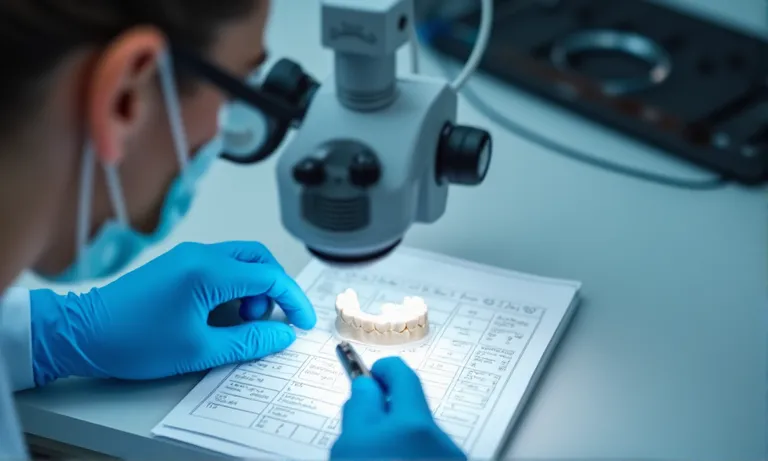
measurable benchmarks to assess crown & bridge quality
What is considered an acceptable marginal gap for crowns?
The marginal gap is one of the most cited clinical indicators for evaluating crown fit.
- The clinically accepted range for marginal gaps in full coverage crowns is 50–120 μm. Anything beyond 150 μm may raise concern for cement washout or bacterial ingress.
- High-precision labs typically aim for internal QC thresholds around 80 μm or less for zirconia crowns.
- Variability is influenced by scanner resolution, margin clarity in the prep, and technician calibration.
- For multi-unit bridges, gap consistency across abutments becomes more critical than individual values.
- The method of measurement matters—digital microscopy is more reliable than visual inspection or probing with an explorer.
Using marginal gap data as a benchmarking metric helps establish a performance baseline and ensures comparability across batches.
How to evaluate occlusal contact and interproximal precision?
Occlusion and contact tightness directly affect seating time, patient comfort, and chairside efficiency. Here’s how we benchmark them internally at Raytops:
- Check the STL file for bite scan integrity and whether the occlusion is fully captured and aligned.
- Evaluate interproximal contact zones using digital pre‑design contact maps to simulate floss resistance.
- Simulate articulation in CAD software with virtual occlusion tools to predict high points before milling.
- Post-milling, dry-fit models are checked with articulating paper and contact gauge tools under lab lighting.
- Final restorations are seated on master models with shimstock (8–12 μm) to test bite accuracy and floss tension.
This multi-step control process ensures consistent occlusal and proximal precision across units and technicians.
Should labs provide documented QC metrics for each case?
Labs that implement QC documentation workflows provide more transparency, accountability, and long-term trust.
- Basic QC metrics may include marginal gap readings, contact pressure estimates, material batch IDs, and technician review sign-off.
- High-performing labs often include visual snapshots of internal fit, post-mill contact zones, and adjustment maps.
- ISO 13485-certified dental labs are typically required to maintain such records for traceability.
- Including these metrics in every case report helps clients better evaluate outcomes, especially in complex or repeat cases.
If a lab doesn’t provide any data or visuals to support crown accuracy, clients are left to judge fit solely by chairside outcome—which increases remakes.
✅ Labs should provide key quality metrics for every case – TRUE
Measurable data like marginal gap, contact tightness, and QC sign-off improve transparency and help reduce remakes.
❌ Visual inspection alone is sufficient to judge crown fit – FALSE
Without objective measurements, errors may go unnoticed until chairside complications occur.
What factors affect quality consistency across batches?
Consistent crown and bridge quality across batches depends on how well a dental lab controls its workflows, technician variability, and case documentation. From an Overseas Dental Lab’s standpoint, stability is engineered—not assumed—through systems, training, and process visibility.
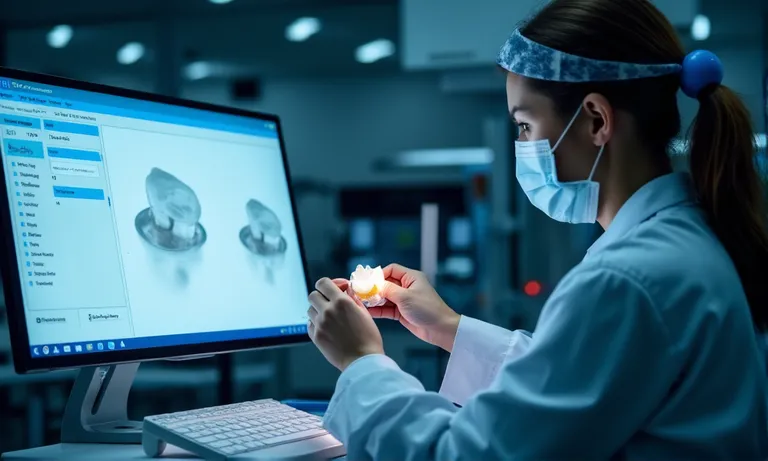
factors affect quality consistency across batches
How do standardized workflows reduce variability?
Workflow standardization is the backbone of quality consistency. Every variable we fix reduces the chance of unpredictable outcomes.
- Digital design protocols ensure that each case follows preset margin, occlusal, and contact parameters regardless of technician.
- Using calibrated milling machines with validated toolpaths prevents tool wear from affecting internal fit.
- Centralized file intake and preprocessing eliminate manual interpretation errors from scattered communication.
- Pre-sintering checks and validated sintering profiles ensure proper material density and shade across batches.
- A uniform cement space parameter is applied during design to ensure similar seating behavior.
Standardized workflows allow labs to scale production without compromising quality—key for high-volume clinics and DSOs.
What role does technician experience and training play?
Even with standardized systems, technician competence remains a major determinant of outcome predictability.
- Senior technicians with >5 years experience consistently produce fewer remakes due to deeper anatomical understanding and design foresight.
- In-house training programs with documented SOPs reduce interpretation errors between teams.
- Labs that segment cases based on complexity allow high-skill technicians to handle advanced anterior or full-arch designs.
- Double-check workflows (e.g. second technician verification) catch 60–80% of potential issues before dispatch.
At Raytops, every technician’s case history and performance metrics are reviewed monthly to reinforce accountability and continuous learning.
Why do some labs have higher remake or adjustment rates?
Labs with inconsistent systems often see higher adjustment or remake ratios. The root causes often fall into three categories:
| Factor | Typical Outcome | Risk Impact |
|---|---|---|
| Inconsistent design SOPs | Variable fit, occlusal interference | More chairside adjustments |
| Technician reassignment | Different interpretation of anatomy | Increased intra-lab variation |
| Missing case documentation | No baseline to confirm or trace error | Higher remake risk on complex jobs |
Maintaining consistency isn’t just about machines or materials—it’s how well people, processes, and standards work together to protect case integrity.
Consistency in crown and bridge cases depends on whether the lab applies standard operating workflows, retains skilled technicians, and minimizes uncontrolled variables. Labs with process gaps or rotating technician assignments typically have less predictable results, which leads to higher chairside adjustments and remake risk.
How does digital file submission impact final quality?
Digital case submission directly shapes the precision and predictability of crown and bridge restorations. Poor file capture or incompatible formats create interpretation gaps, while clean, compatible STL files accelerate lab accuracy and reduce chairside adjustment needs.
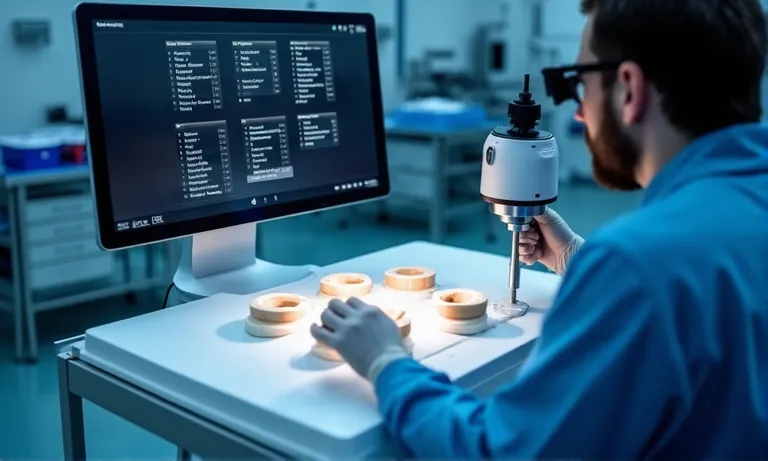
digital file submission impact final quality
What STL file formats and scanners are compatible?
The format and origin of a digital scan influence how seamlessly it integrates into lab workflows.
- Most labs operate natively with open STL files. Proprietary formats (e.g. DCM, PLY) may require conversion and can introduce errors.
- For best results, use scanners validated by the lab’s CAD/CAM system (e.g. 3Shape, Medit, iTero, Carestream).
- File resolution matters—higher polygon count improves surface definition but may slow rendering if overly large.
- Labs prefer closed meshes with clear prep boundaries to avoid guesswork during design.
- Always check the lab’s latest scanner compatibility list before submission.
Proper format matching reduces time spent on file correction and maximizes first-pass production efficiency.
How does margin clarity affect design interpretation?
Margin clarity in scans determines how accurately the lab can define prep edges and create proper sealing zones.
| Issue Type | Design Consequence | Outcome Risk |
|---|---|---|
| Fuzzy or unclear margin | Guesswork during line marking | Poor fit, open margins |
| Debris or gingiva interference | Inaccurate path of insertion | Seating issues, rocking crowns |
| Over-scanning with voids | Misreading of emergence profile | Aesthetic compromise |
At Raytops, we perform margin evaluation in Exocad before moving forward. Cases with uncertain boundaries are flagged back to clients within 12 hours.
A sharp margin line is not optional—it’s foundational to restoration integrity.
What digital preview or QA steps does the lab perform?
Digital cases allow for structured internal validation steps prior to production.
- Incoming STL files are checked for margin integrity, occlusal scan completeness, and artifacts.
- A technician assigns each case into one of three complexity tiers and flags if margin visibility is below threshold.
- Occlusion and interproximal contacts are simulated in software with pre-mill adjustment maps.
- Preview images of final design are archived internally or shared with clients upon request.
- If cases are urgent or multi-unit, team leads review key areas manually before nesting.
These steps ensure digital submissions are not blindly milled—but actively interpreted for success.
Submitting clean digital files in supported formats dramatically improves restoration accuracy and turnaround. Key success factors include STL compatibility, margin clarity, and whether the lab follows defined digital QA steps—not all do.
How to evaluate a dental lab’s remake policy and quality assurance process?
A clearly defined remake policy and documented quality assurance (QA) system signal whether a dental lab is serious about long-term reliability. Labs that hide remake data or lack structured feedback mechanisms may cost clients time, money, and patient trust.
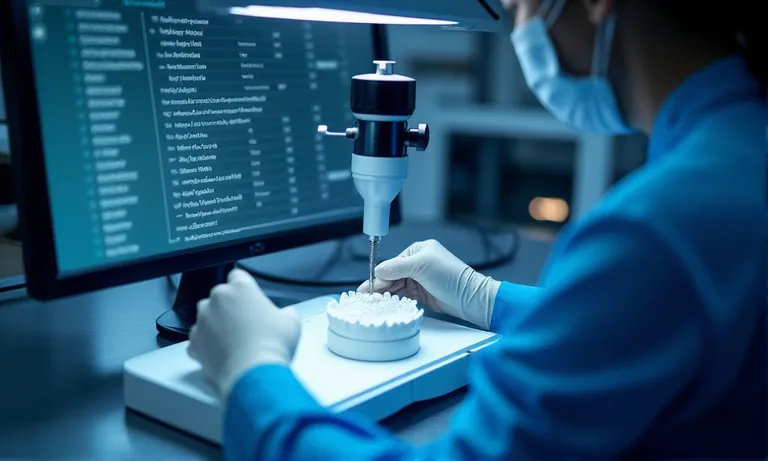
remake policy and quality assurance process
What remake rate range is considered acceptable?
Remake rate is a key metric that reflects overall consistency and process control.
- Industry benchmarks indicate an average crown & bridge remake rate between 3%–5% is acceptable for custom-made dental devices.
- Rates above 7% typically indicate either poor case intake quality, technician inconsistency, or lack of double-check systems.
- Well-managed labs often achieve 2% or lower, especially when margin visibility and occlusal detail are clear.
- It’s important to ask how the lab defines a “remake” — is it full re-fabrication, minor adjustment, or internal correction before shipping?
At Raytops, our monthly remake metrics are shared with repeat clients during QA reviews to maintain transparency and drive mutual improvement.
How transparent is the lab about feedback and corrective actions?
A reliable lab encourages feedback and uses it to prevent future issues—not just fix the immediate problem.
- Feedback loops should be built into the order system (QR tags, digital feedback forms).
- Labs should maintain a QA log tracking type of error (fit, contact, occlusion) and responsible technician.
- Corrective action mechanisms should include technician coaching or protocol revisions when repeated issues arise.
- Labs that proactively report adjustment trends before they trigger remakes build much stronger trust with clients.
Transparent QA processes are not just about tracking errors—they reflect how seriously the lab takes long-term collaboration.
What documentation is typically required to avoid remakes?
Remakes often occur due to missing or incomplete initial case data. Clients and labs must align on submission completeness.
- Include prep photos or intraoral images when margin visibility is questionable.
- Submit clearly labeled STL files with prep date, case ID, and shade details in the filename.
- Provide bite scan and opposing arch scans whenever occlusion is involved.
- Indicate expected turnaround time—some urgent cases may skip checks without notice.
- Use structured lab scripts or prescription forms to avoid ambiguity in design requests.
Mutual documentation reduces blame-shifting and promotes predictable results.
✅ Labs with transparent remake policies are more reliable – TRUE
Open reporting, error tracking, and collaborative QA improve trust and reduce repeated mistakes.
❌ Remakes are inevitable and don’t require review – FALSE
Unexplained or untracked remakes often indicate larger systemic issues that will persist without correction.
What signs indicate a reliable crown & bridge outsourcing partner?
A dependable outsourcing partner signals its reliability through visible certifications, predictable performance, and structured onboarding. These are the cues buyers should prioritize—not price alone—when selecting an Overseas Dental Lab.
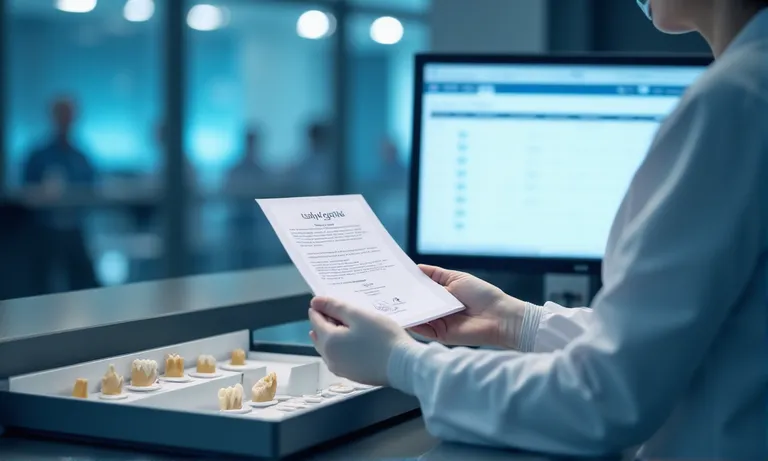
reliable crown & bridge outsourcing partner
Does the lab hold recognized certifications (e.g. ISO, FDA)?
Certifications validate that a lab operates under formalized systems—not just individual technician experience.
- ISO 13485 and FDA registration indicate compliance with international standards for dental device manufacturing.
- CE MDR Class I confirms the lab’s prosthetics meet essential EU safety and traceability requirements.
- Look for external audits or third-party assessments—some labs may claim certification without current validation.
- Documentation should be readily available, not only “upon request.”
For example, Raytops holds both ISO 13485 and CE certification, with renewed audits completed annually and SOP logs digitally archived for traceability.
Can the lab demonstrate consistent delivery performance?
Delivery reliability reflects how well a lab manages internal planning, production, and communication.
| Performance Metric | Reliable Lab Benchmark | What to Ask Suppliers |
|---|---|---|
| On-time delivery rate | 95%+ | Do you track turnaround data monthly? |
| Avg. production time (C&B) | 4–6 working days | How are urgent cases prioritized? |
| Case tracking availability | Real-time or portal-based | Can we access live tracking? |
| Late case notification | Within 12 hours of delay | How are delays communicated? |
Without structured data, clients may only learn about a lab’s inconsistency after multiple delays.
How responsive and structured is the onboarding and trial process?
Strong labs don’t “wing it”—they have structured onboarding frameworks that ensure alignment before volume scaling.
- Trial phase usually includes 3–5 test cases across varying difficulty (posterior, anterior, multi-unit).
- Labs should provide case-specific feedback and accept mutual revisions to understand client preferences.
- A dedicated onboarding coordinator ensures consistent file handling, delivery, and feedback integration.
- Labs should review STL submission protocols, shipping preferences, and emergency handling in advance.
We apply a standard onboarding checklist reviewed over video call, and assign a technical liaison before scale-up.
A reliable outsourcing partner proves itself through compliance, consistency, and process clarity—not just verbal promises. Decision-makers should focus on external certifications, proven delivery history, and whether onboarding feels engineered or improvised.
Conclusion: Choosing a Crown & Bridge Lab Is a Strategic Decision—Not a Guess
Selecting the right Overseas Dental Lab for crown & bridge cases requires more than comparing unit prices or turnaround time. The most successful partnerships are built on measurable quality benchmarks, transparent remake policies, digital compatibility, and operational consistency.
From Raytops Dental Lab’s perspective, reliable crown & bridge outcomes are never accidental—they result from structured workflows, validated digital protocols, and a shared commitment to continuous improvement. We’ve seen how clinical fit, esthetics, and chairside adjustments all trace back to upstream decisions made during lab collaboration.
For decision-makers in DSOs, private clinics, or distribution networks, here are the three questions to keep top of mind:
- Can this lab prove consistent quality—not just promise it?
- Are there systems in place for feedback, documentation, and error prevention?
- Does this lab act like a scalable partner or a case-by-case contractor?
If the answers aren’t clear, it’s time to re-evaluate the partnership.
At Raytops, we don’t just fabricate—we collaborate. And we’re ready to show what precision-driven outsourcing truly looks like.


